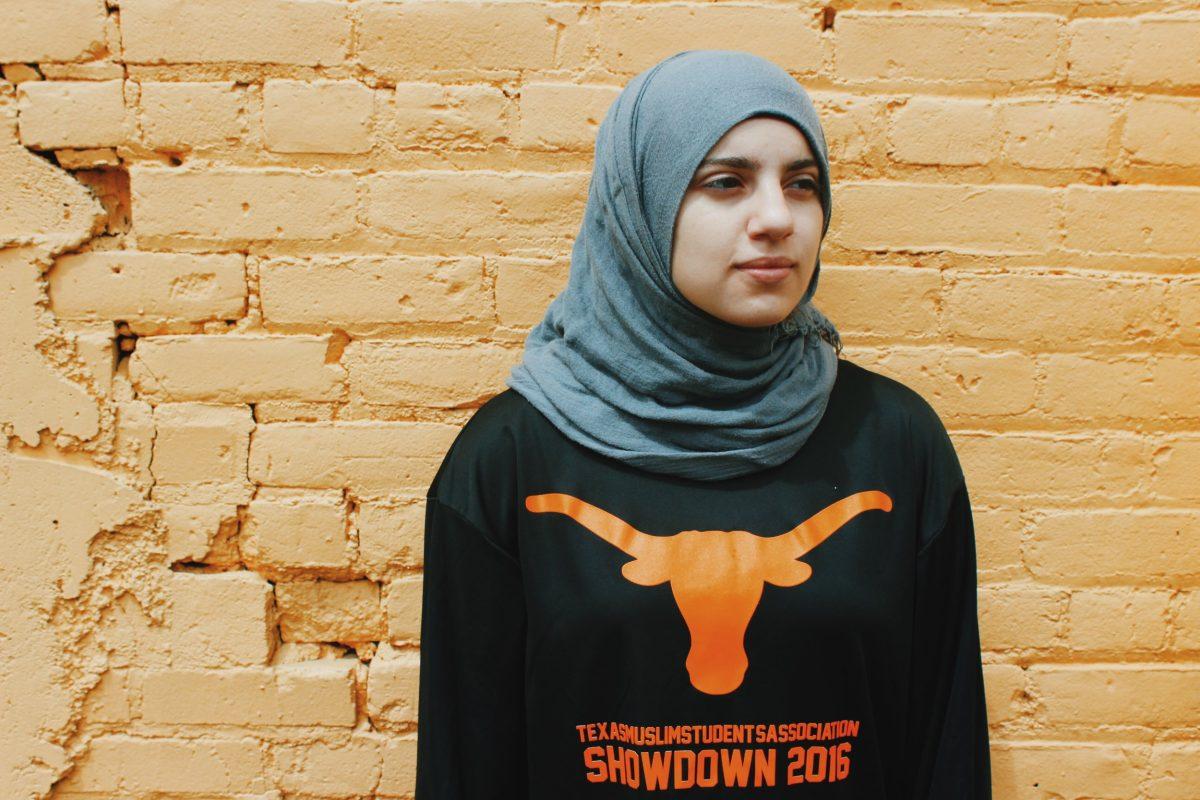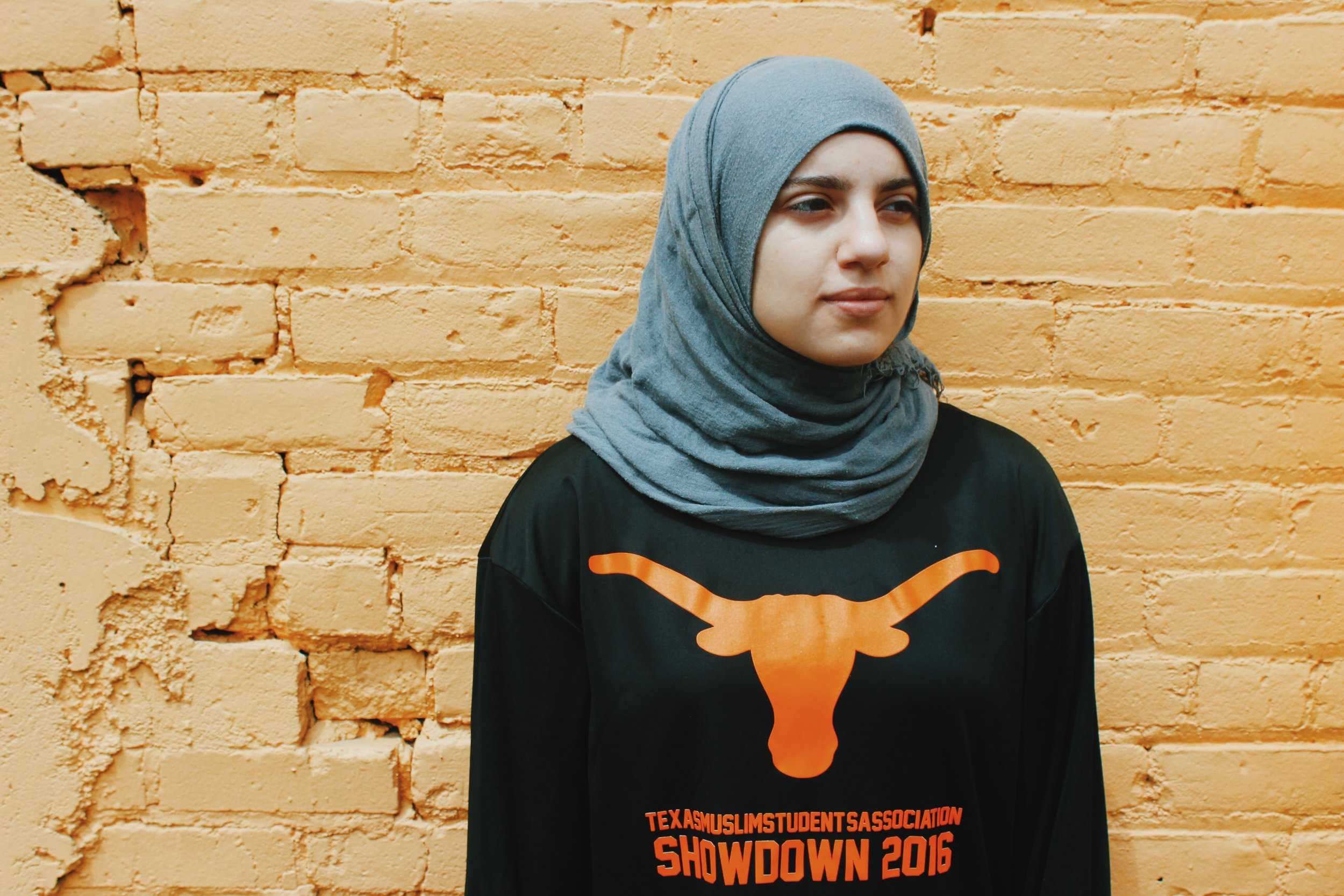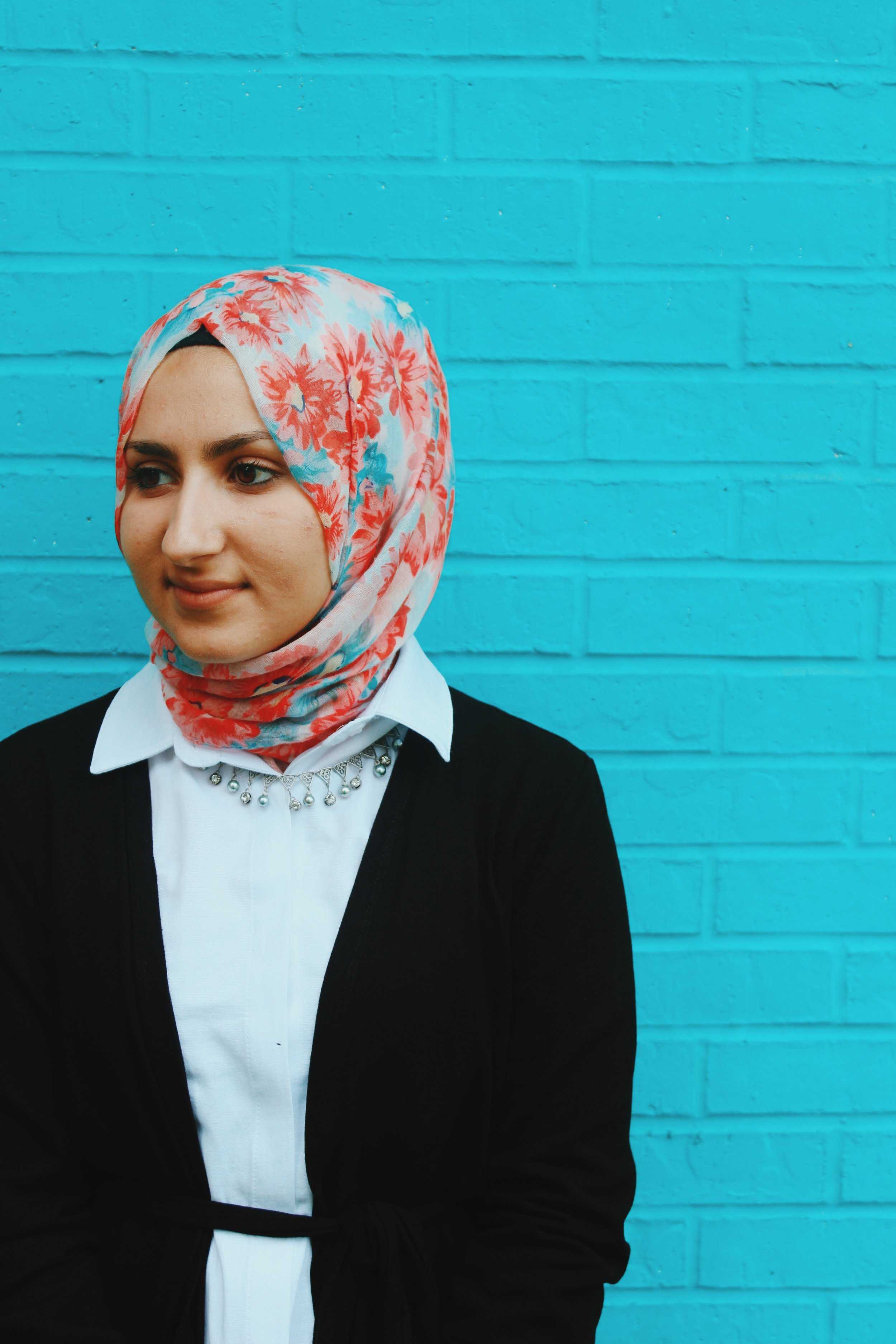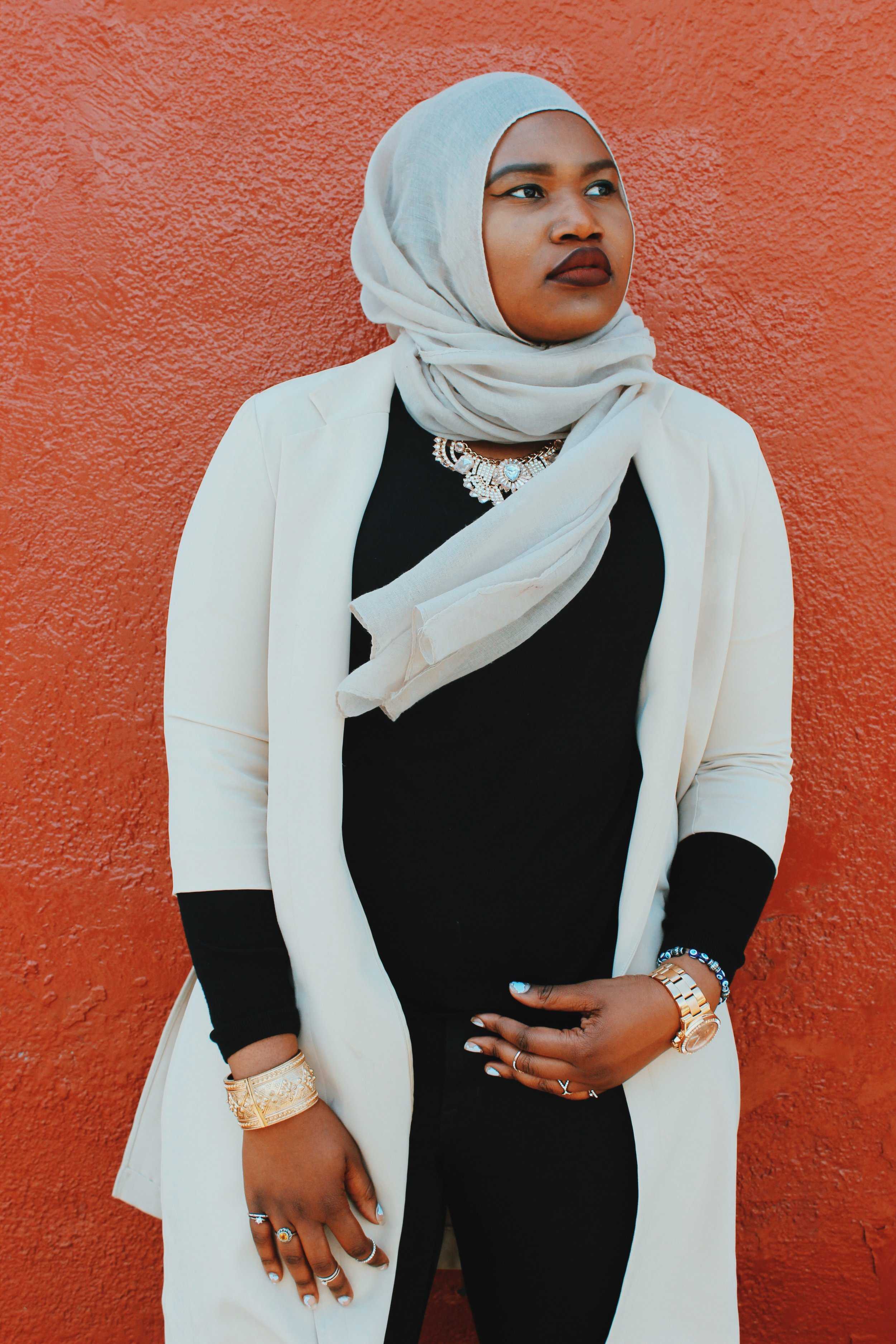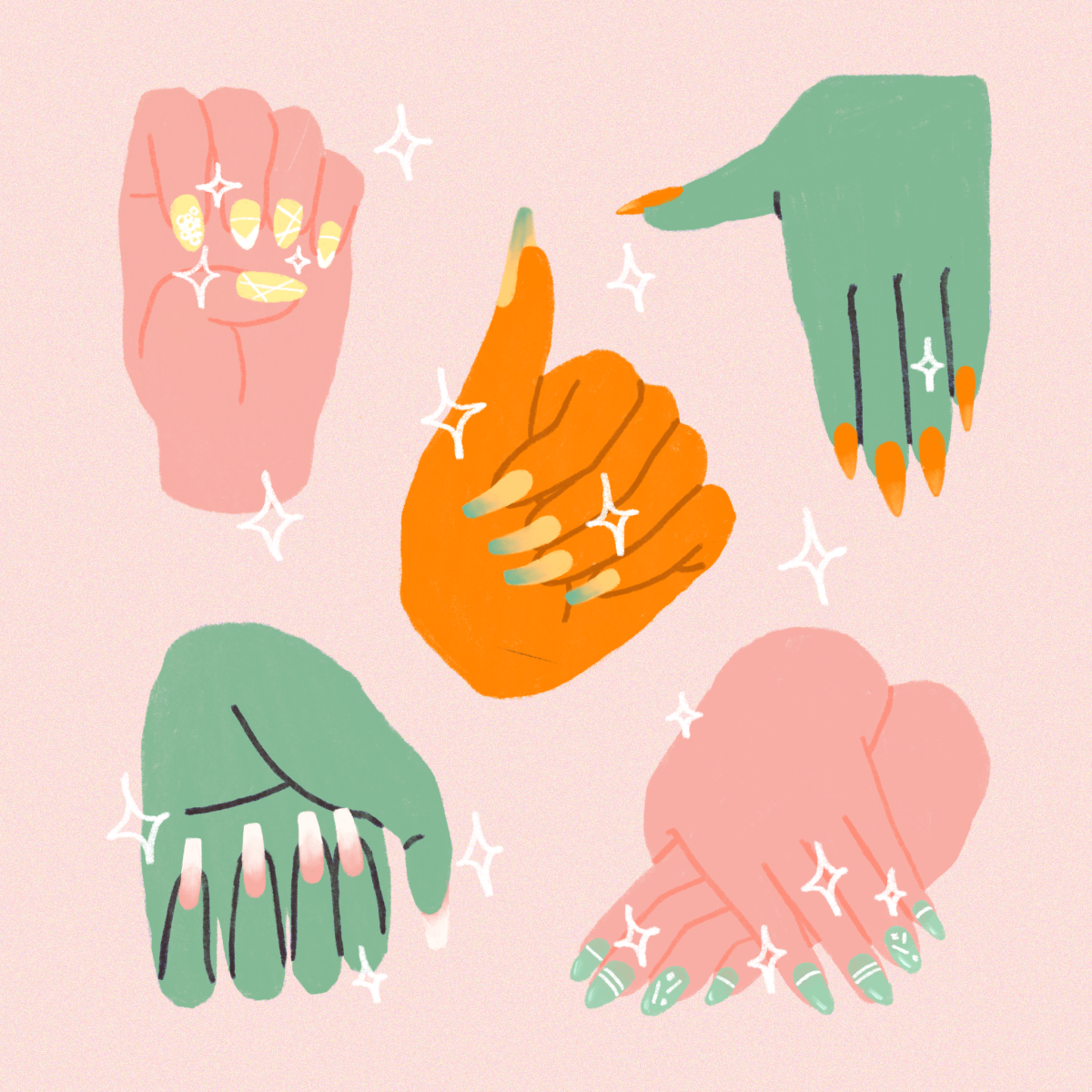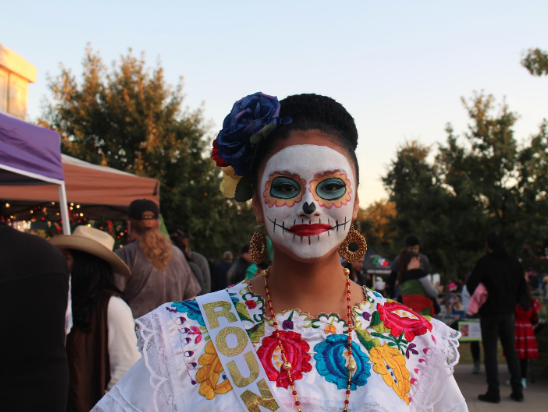Editors Note: This story originally appeared in Digital Issue V.
When biochemistry junior Dania Hussein gets ready for a game of basketball, she grabs her Nike shoes, running shorts, Nike undershirt, T-shirt and lastly, she assembles her hijab.
Story by Ethan Elkins and Rachana Jadala
Photos by Miranda Chiechi
Wearing a hijab while being active is often an extra obstacle Muslim women face due to the extra amount of covering required, but this does not stop Hussein. She disregards the idea that her hijab limits her from playing basketball with her friends. “I’ll wear a long sleeve tight shirt under a jersey and tuck in my scarf. Most of my friends and I will wear shorts with tights,” she says.
Biochemistry junior Dania Hussein in her hijab.
Companies like Nike have come out with dry-fit scarves that are worn by many Muslim women on warm days and during exercise. These brands are expanding their markets while continuing to acknowledge the prominent global population of Islamic women.
With its growing conglomeration of wealth in the Middle East, the global fashion industry has taken an interest in targeting the vast population of Muslim women. The Population Reference Bureau estimates there are 800 million practicing Muslim women in total, which is a considerable market compared to the amount of representation given to the community in notable ad campaigns. Modesty expressed through fashion is a choice encouraged by the Quran, but there is a heavy stigma associated with the practice of conservative dressing.
Dressing modestly and wearing the hijab are personal decisions. “I wear [the hijab] because I am Muslim. Culture did tie in. I am Middle Eastern and Syrian, and it is specifically encouraged in my family,” biomedical engineering freshman Aya Akid says. “I feel more comfortable wearing it, and it makes me proud.” The way she chooses to dress has cultural and personal benefits, especially when viewed through the perspective of women.
Covering can also contest the hypersexualization and objectification of which women are often subjected. “It is meant to preserve a woman’s beauty for her significant other. It isn’t oppressive; rather, it’s liberating,” health and society junior Fatimah Kamara says. “You have this cover that you wear so people get to know you for who you are instead of what you look like.”
Aya Akid is a Biomedical Engineering freshman.
Kamara also addresses several common misconceptions about dressing modestly and the hijab. The idea that women are forced to wear a hijab and that it somehow restricts their rights is a Western and ethnocentric idea, she says. Since the average standard of modesty in Western culture is different from that of Muslim women, people often assume that Kamara must be forced to dress this way. “I want people to know that it is not a symbol of oppression,” she says. “It is up to the woman if she wants to cover. The Quran doesn’t force anyone to do anything. Wearing the hijab does not mean women can’t be functional, rather the opposite.”
The generalized term “hijab” does not refer to one type of clothing Muslim women can use to traditionally cover. The actual word for the headscarf covering is “abaya,” but it is usually just referred to as hijab. There are other articles of clothing worn by Muslim women in various communities. One example is the niqab, which covers the entire body except for leaving the eyes exposed. The burka covers the entire body and includes a mesh screen that covers the eyes, and the jilbab is a traditional garment that has a hooded top that acts as the hijab.
Hussein says the Quran uses the word hijab, but it does not specify what type of covering should be used. “Some cultures push other types of covering,” she explains. “Most people accept the idea of the headscarf as the main type of hijab.” Culture and heritage play an important role in what type of covering a Muslim woman can choose. Having Palestinian parents and family in Jordan, Hussein was influenced by her family to wear her hijab the way she does, as the headscarf.
Incorporating modesty into a Muslim woman’s style goes far beyond the hijab. There tends to be a misconception that all Muslim women have to wear Muslim-specific clothing, like burkas, niqabs and jilbabs, but the majority of the population wear the same clothing marketed toward Western countries. Akid, Kamara and Hussein all look to stores like Forever 21 and H&M for clothes that fit their styles. “I look for modest pieces that cover my parts sufficiently and don’t accentuate anything specifically,” Kamara says. “Having the oversized look is in now anyways.”
Fatimah Kamara is a junior majoring in Health and Society.
Kamara’s culture also ties into the way she dresses and accessorizes. Her father was born in the West African country of Sierra Leone, and she still has a large amount of family residing there. Kamara likes to wear clothing that expresses her heritage, and often incorporates jewelry that “has an African vibe.” She describes her style as “a mix between classy and chic.”
Stores like H&M are beginning to notice their large quantity of Muslim customers like Kamara. In October 2015, the second largest retailer in the world released an advertisement that featured Mariah Idrissi, a hijab-wearing model. Her appearance spurred a debate regarding Muslim women in fashion. “Anything that’s not stated as forbidden is permissible,” Idrissi said in an interview with CNN. Other European companies have followed H&M’s lead. Dolce & Gabbana released an entire collection specifically targeted toward Muslim women, now available online and in Dubai, the Middle East’s fashion hub.
The way that Western clothing companies are accounting for modest women provides evidence that fashion is becoming more accommodating and reactive to the population. Different cultural interpretations means there is room to explore and engage fashion in a meaningful way. Akid, Kamara and Hussein all come from different backgrounds, and their own personal style reflects their personality and identity.
Having more options to choose from means having an easier time finding clothes that are both modest and stylish to them. The occasional dirty looks and harsh stares they receive at their hijab are not because of their personal choice to dress modestly, but rather a response to their Muslim identity. “Islam is a religion of peace and acceptance,” Kamara says. “I encourage anyone curious or confused about my faith to come up and ask me about it. At the end of the day, we are all human.”































